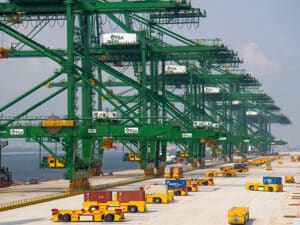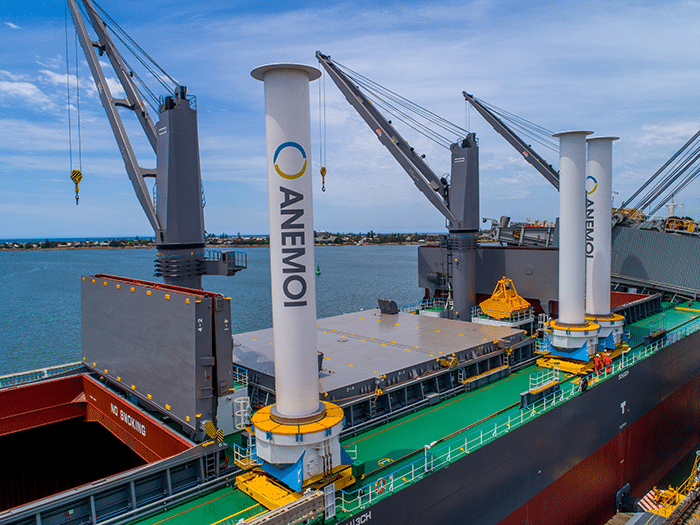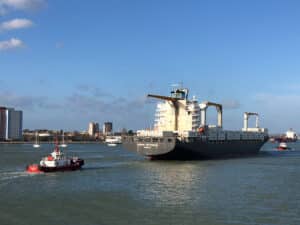
Op-Ed: Rotor sails and the race to decarbonize
Written by Heather Ervin
Credit: Anemoi
By Nick Contopoulos, COO, Anemoi
As a renewable source of energy, wind is now a compelling option for shipowners.
Rotor sails were first installed on a vessel over 100 years ago. But through research, innovation and meticulous development Anemoi engineers have re-imagined the technology for modern use.
An aerodynamic phenomenon, known as the “Magnus Effect,” is key. As the cylinder rotates within an airflow, a forward thrust force perpendicular to the apparent wind direction is created, which delivers additional thrust to the vessel. The thrust generated can either provide additional vessel speed or maintain vessel speed by reducing power from the main engine. The rotor sails, which are tall and cylindrical, can be installed on the main deck, bow or elsewhere with sufficient space.
Many forward-thinking owners and charters are turning to wind to address vessel emissions. Anemoi is working on a number of projects for delivery in 2023 and onwards. These projects are for bulk carriers ranging from 82k DWT to 388k DWT with three to five rotor sails per vessel. Due to the nature of each of the vessel’s operations, cargo handling and air draft requirements, every vessel has chosen to select a deployment system for their rotor sails. On some vessels Rotor Sails will be installed on Anemoi’s unique rail system, which allows the sails to move along or across the deck. On other vessels, folding Rotor Sails are being installed, which enables the sails to be lowered from the vertical.
In November last year, Anemoi reached an agreement with COSCO Shipping Heavy Industry Co. (CHI), one of China’s major shipbuilding organizations. CHI has numerous yards capable of up to 7.5m dwt annual production across all major vessel segments and a significant global customer base.
CHI customers will now have the option to install Anemoi rotor sails on newbuild vessels or retrofit during dry dock. Under the terms of the agreement, the companies can offer a turnkey installation solution to customers.
CHI share a long-term vision of the role that wind assisted technology can provide in delivering emission reduction. Anemoi are planning a highly successful co-operation in the years to come and are already lining up the first turnkey installation opportunities.
Optimal performance and automation
The Anemoi rotor sail system is comprised of the rotor sail itself, the foundation, deployment system (if required), wind sensors and electrical, control, and automation systems. The main components of our rotor sails are the “rotor” (the cylindrical, rotating part), the support tower, upper and lower bearings, and the electrical drive system.
The rotor is built from advanced lightweight composite material and the tower is a steel column structure. We use these materials to ensure maximum performance of our rotor sails and to withstand all weather conditions.
The rotor sails have a control station located on the bridge. This automatically controls the speed and direction of the rotor sails, as well as monitoring the performance and status of the system. Our control system is designed to maximize performance and minimize crew input with automated speed and direction setting, equipment monitoring, safety features and performance
reporting to stakeholders using a ship to shore data transmission.
Future proof
Getting to zero emission shipping will be a major challenge. However, with emerging technologies like rotor sails becoming widely available and adopted in the market, wind can offer a solution to energy efficiency in the short, medium and long-term for both newbuild and retrofit. As other eco-technologies, energy-saving devices and alternative fuels become market ready, these can be used in conjunction with auxiliary wind propulsion to achieve enhanced environmental benefits.




